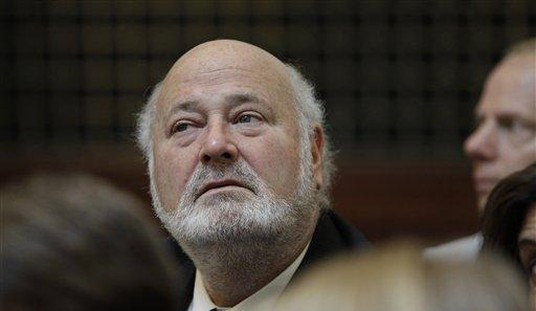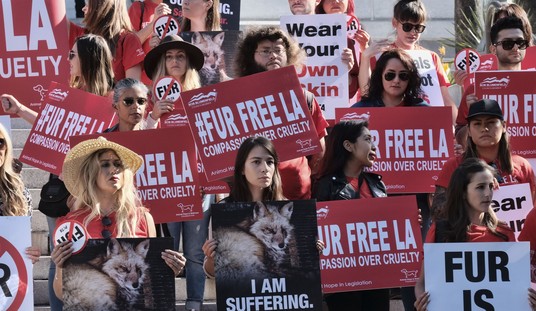WASHINGTON – President Obama remains uncommitted regarding construction of the proposed Keystone XL pipeline, but recent remarks indicate he maintains serious qualms about allowing completion of the 1,661-mile, $7 billion project.
That apparent reluctance has attracted barbs from supporters who maintain the pipeline running from Hardisty, Alberta, Canada, to an area near the Texas Gulf Coast will create thousands of jobs and promote energy security.
“We need to get this project done for the American people,” said Sen. John Hoeven (R-N.D.), who sponsored a resolution with Sen. Mary Landrieu (D-La.) and several other lawmakers asserting that the project is in the public interest.
“It really is about jobs,” Hoeven said. “It is about economic growth and activity. It is about energy for our country and getting this country to the point where we are energy independent, energy secure, where we don’t need to rely on oil from the Middle East. That is why 82 percent of Americans in the most recent poll across this country are saying this is the kind of project we need.”
But in a recent interview with the New York Times, Obama held that pipeline construction won’t be the “big jobs generator” that its supporters maintain. And, the president added, the project will do little to enhance the nation’s energy situation.
“Putting all your eggs in the basket of an oil pipeline that may only create about 50 permanent jobs…isn’t a jobs plan,” Obama said in a speech focusing on employment in Chattanooga, Tenn., on July 30.
Obama is expected to decide the pipeline’s fate by the end of 2013 or early 2014 at the latest. At least part of the decision will be based on a review of the project by the State Department, which is involved because it’s a multi-national project with Canada.
The Keystone pipeline, a project of the TransCanada Corp., an energy company based in Calgary, Alberta, is primarily intended to transport oil sands bitumen – sands saturated with a viscous form of petroleum — from Canada to Gulf Coast refineries.
Two phases covering 2,151 miles already are operating, one from Hardisty, Alberta, to Patoka, Ill., and a second from Steele City, Neb., to Cushing, Okla. A third phase under construction will run from Cushing to the Texas Gulf Coast.
The pipeline system currently in operation can move up to 590,000 barrels of the crude Canadian oil to refineries in the American Midwest per day.
It is a proposed fourth phase that is drawing controversy. TransCanada wants to run a 1,661-mile pipeline from Hardisty crossing over the border into Morgan, Mont., that would cost about $5.3 billion and move 830,000 barrels of crude oil per day. If approved, it will terminate in Steele City, where the oil will enter the other pipelines.
Environmentalists strongly oppose the fourth phase, expressing concern over oil spills and the potential for damage to the Ogallala aquifer, one of the world’s largest underground water tables, which spans eight states, provides drinking water to two million people and supports $20 billion in agriculture.
Originally the route of the fourth phase was supposed to cross the Sand Hills in Nebraska, a large wetland ecosystem. TransCanada changed the route to avoid the conflict.
Environmentalists like Sen. Sheldon Whitehouse (D-R.I.) also maintain extracting the oil sands will further contribute to global climate change, noting the removal requires a greater expenditure of greenhouse gas emissions compared to the extraction of conventional oil.
“The tar sands oil to be transported by the Keystone XL pipeline would wreak havoc on our climate by unleashing up to 22 percent more carbon pollution than average crude oil refined in the U.S.,” Whitehouse said. “With communities in Rhode Island and around the country already suffering from the effects of carbon pollution, we can’t afford to make things worse.”
The Sierra Club, a national environmental group, is actively opposing the project, asserting in a statement that tar sands oil “is the most toxic fossil fuel on the planet that leaves in its wake scarred landscapes and a web of pipelines and polluting refineries all while delaying our transition to a clean energy economy. It is an oil disaster that we can still stop.”
Ultimately the decision is left to Obama. The president has already rejected the project once, in January 2012, when he was faced with a congressionally mandated deadline to decide, noting at the time that additional assessment was required. TransCanada reapplied after routing the pipeline around the Sand Hills.
Now the White House is openly questioning TransCanada’s claim that the pipeline will create as many as 13,000 construction jobs — 6,500 a year over two years. The president, in his interview with the NYT, placed the number closer to 2,000 construction jobs, although he didn’t reveal how he arrived at that number.
The State Department, in a draft report issued in March, placed the anticipated number of construction jobs at 3,900 per year. Including direct, indirect, and induced effects, Foggy Bottom acknowledged the project could potentially support 42,100 average annual jobs over two years.
The report further found that the project could potentially translate into approximately $2.05 billion in earnings. Direct expenditures such as construction and material costs would total about $3.3 billion. Short-term revenues from sources such as sales and use taxes would total approximately $65 million in states that levy such a tax.
“America’s Building Trade Unions were disappointed to see that the president chose to minimize the importance of jobs for construction workers and to use employment figures promulgated by special interests and activist billionaires rather than his own Department of State’s findings that the proposed Keystone xl pipeline would support approximately 42,100 average annual jobs across the United States over a one-to-two year construction period,” said
The draft review also said the pipeline would account for only about 35 permanent new jobs after construction is completed. Obama, in the interview with the Times, placed that number at between 50 and 100, adding that it would represent only “a blip relative to the need.”
In another report, the Department of Energy in June 2011 dispelled claims that the oil traveling through the pipeline was destined for foreign markets and that it might actually lead to an increase in pump prices. DOE found that unless there exists a surplus of heavy oil on the Gulf Coast “there would be no economic incentive to ship Canadian oil sands to Asia.” The Gulf refineries rely on declining supplies of Mexican and Venezuelan heavy crudes and therefore would be “natural customers for increased supplies” like that coming from Canada.
“Gasoline prices in all markets served by (East and Gulf Coast) refineries would be lower, including the Midwest,” the report said.
Hoeven noted that the president appears to be considering placing additional requirements on the project in exchange for his approval, noting during the Times interview that he believes Canada could be “doing more to mitigate carbon release.”
“So here we are, after 5 years — after 5 years of delay — the president is talking about adding new requirements to the project,” Hoeven said. “He is talking about adding those requirements in another country — our closest friend and ally, Canada — or I guess he is essentially saying he would turn down the project, a project that actually reduces greenhouse gas because there is less greenhouse gas if we move that oil by pipeline than if it is moved by truck, by train, or by tanker.”









Join the conversation as a VIP Member